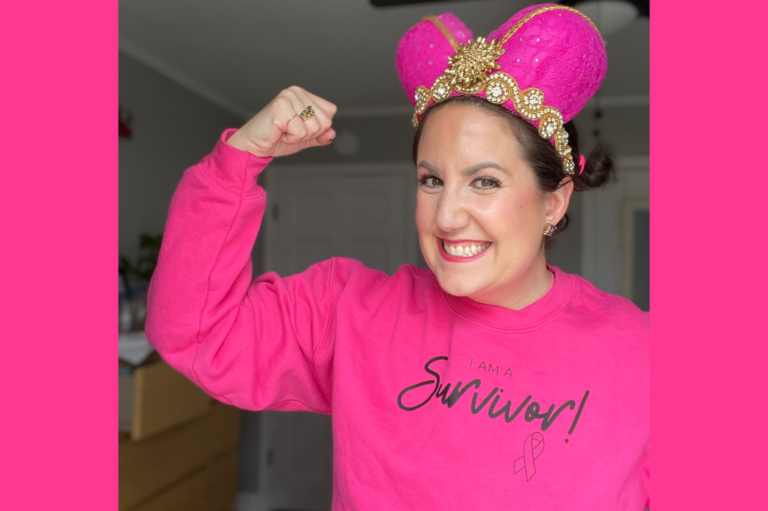3 Questions We Asked a Sex Therapist
Question 1: How do I mentally prepare for having sex? How do I turn off my brain and become “sexy wife” when all day I have tended to everyone’s needs as mom or sister or friend and the list goes on?
A: Before we can even talk about sex, we need to zoom way out and explore other areas of intimacy that enhance the physical intimacy. These areas help us get mentally and emotionally ready for sex.
Through my experience working with couples and marriages over two decades plus extensive academia, I have adapted a model for partnerships and marriages. I like to use the illustration of marriage and partnerships like a “three-legged stool”. The totality of a thriving marriage consists of the artful balance of the stool’s legs: emotional intimacy, physical intimacy, and spiritual intimacy. When we have mastered each leg and are standing on this model evenly, we have arrived at the place of health and healing in our relationship.
Emotional intimacy is defined by connecting intimately on an emotional and feeling level. Emotional intimacy comes alive when we are having meaningful dialogue and it’s not about the kids or the chores that need to be done around the house. When we talk about our highs and lows of the day, when we feel connected because our partner or spouse is actively listening and providing cues that he/she understands and validates us, then we know we are experiencing emotional depth in the relationship. When there is healthy back and forth dialogue and interactions, we are constantly strive to become mature and healthy communicators who engage in meaningful talk, expressing thoughts and feelings, and engage in active listening who remain present throughout the conversation.
Another way to increase emotional intimacy is through dreaming together. When we dream about the future together we are extending the life of the marriage and creating fantasy that provides longevity. The Penners (relational authorities in my world) share a formula for intimacy that involves connecting on an emotional level as husbands and wives and partners:
- 15 minutes a day
- 1 night a week
- 1 weekend a quarter
- 1 week a year
I encourage couples to connect weekly through date nights or date days.
Remember that time when we would go on dates and not have a care in the world, and we would forget focusing on other responsibilities? Remember the excitement picking out an outfit, looking online to read the menu and explore what you would order, or watch the trailer a thousand times to get ready for the movie? All of that encompasses an art of playfulness and excitement. Let’s learn how to tap into that side of us, to bring to life the emotional intimacy, and to being great friends who are amazing lovers.
I encourage alternating who creates the dates each week so that we have the joy of pursuing our partner or spouse and feeling pursed by them. When it’s your turn to choose, you pick the restaurant your partner or spouse would love most, not you. You pick the activity they would enjoy most, not you.
Ask each other what was your high and low of the day. This does not take much time to express and it can lead to feeling more connected. Ask each other these questions to gain a sense of how things are going in the marriage:
- How have you felt loved by me this week?
- How can I love you differently or more?
These questions allow us to praise one another while also expressing our desires and being vulnerable. Collectively these are all great tools for building emotional intimacy and ultimately feeling seen, heard, known, and loved by each other.
Spiritual intimacy is defined as connecting on a deep spiritual level that fits your partnership or marriage. We all have something that we believe keeps us intimately connected to our partners, spouses, and even the Universe. Some examples of spiritual intimacy are reading a devotion together; encouraging the other with meditative words, scripture, or inspirational quotes; praying together; doing a religious workbook together; etc.
Physical intimacy is defined by connecting on a physical touch level. This level can feel the most intimate but is just as intimate and important as the other two areas. Physical touch is a continuum of behaviors ranging anywhere from holding hands, kissing, sitting together on the couch, showering together, to being sexually intimate through affection, arousal, and lovemaking.
When we are mentally, emotionally, and spiritually connected with our spouses or partners, our sex life comes alive in a beautiful way. We are playful, creative, generous, childlike, flirtatious, transparent, imaginative, kind, educated, and lighthearted. We are having fun.
In conclusion, when we are focused and disciplined in these three areas of intimacy, we are enhancing and enriching our partnerships and marriages to be well positioned to experience amazing sex.
Question 2: But what if we don’t even flirt anymore, we argue too much about day-to-day stuff, and we see sex as a duty not a desire?
A: Great questions. You are not alone nor is this the first time I have heard these questions. Let’s unpack them. Flirting. Sometimes the longer one is in a relationship, the less and less the art of flirtatiousness is there. Responsibilities are ever present and ever growing. Our minds are going in various directions including responsibilities as a mom or dad, as an employee or employer, as a neighbor or friend, as a daughter or son, and the list goes on. We have shut down our ability to engage in flirtatiousness and fun because we have lost the art. It is either we have sex or we don’t, and there is no “grey” area of being physical without the intention it must lead to the bedroom. If one spouse attempts to flirt (i.e., passionately kiss), the other might not respond because they imagine it can only lead to one thing: the bedroom, and they are in the middle of cooking dinner, reading a book to a child, doing laundry, responding to a work email, etc. So, sadly, we have missed an opportunity for connection for fear of it leading to sex.
We need to have days where we engage in “physical, non-sexual touch.” Stay with me. My professor in graduate school called these days “purple days,” and I had a client the other day refer to it as “purple love,” and I loved that. On the days where we are having “purple love,” we can fully engage in physical non-sexual touch without the demand, anxiety, or fear of rejection or rejecting the other for sex. Purple love is not “orange love.” “Orange love” is growing affection that leads to erotic, orgasmic lovemaking/intercourse. Purple love has with it the freedom to flirt, have fun, and bring back the art of being playful.
One way to be physically flirtatious is to 1) passionate kiss for thirty seconds and 2) hug for one minute. This is purple love; it does not lead to further physical intimacy and truly gives you freedom to embrace the exercise and have fun without a felt sense of demand or anxiety. Now, pause in your reading and go find your partner or spouse and surprise them with this exercise. I can guarantee it will be a success! We will talk about orange love later, but for this answer on flirtatiousness, have more purple love days, like 3-4 a week.
Another way of flirting is to use the “Because I love you” card. Get an index card and decorate it with those words. Pass the card back and forth after doing kind gestures for each other. Gestures can include: folding the laundry and placing the card on top, getting oil changed in your spouse’s car and putting the card on the steering wheel, getting their favorite box of cereal and putting the card inside the box, etc. Don’t let it stay in your possession for too long.
We argue a lot. This can hinder the level of depth felt in being physically intimate, can hinder accessing the desire for sex, and can hinder the ability to be fully present during sex. We need to go back to building a strong foundation of emotional intimacy. Go back to the basics of being friends and spending quality time together. This might be when you reach out to a therapist as a third party to help you navigate healthy conflict styles and ways to connect and find each other again on an emotional level.
Sex is a duty not a desire. My professor in graduate school spoke about sexual intimacy on a continuum where 1 represented sex out of duty and 10 represented sex out of 100% desire. What might surprise you is where he said healthy marriages need to be….not a 10, not a 9, not even an 8, but between a 4-6. Somedays you will need a little bit of duty to get you in the discipline of feeling desire, to tap into acknowledging where in your body you are feeling desire, and to become intimate. Some days you will feel the physical desire and want to be intimate. The days leading up to and during ovulation can create a higher number on the continuum because your body is hornier during those days, so take advantage!
Sex is not ever to be used as leverage in the relationship, as a reward, or withdrawn as a consequence. If we are in the habit of using sex in this manner, then we are reinforcing sex as duty not based out of desire and discipline. Another possibility of feeling like sex is a duty could be contributed to lower levels of free Testosterone or lower levels of sex hormone bunding globulin. If you are experiencing low sexual desire, fatigue, depressed mood, difficulty losing weight, and none of these symptoms are caused by circumstances (children in the home, demanding job, ailing parent and being the caretakers, etc.), you might want to reach out to your OBGYN and have your hormones checked and tweaked.
Question 3: How often is often enough for physical intimacy?
A: When reviewing the 3-legged model, I encourage and empower my patients to be emotionally intimate each week, spiritually intimate each week, and physically intimate each week. It is healthy and connecting to have weekly intimate times together all along the continuum. Just as much as I would hate for you to go weeks without a date night, I would hate for you to go weeks without being physically intimate or connecting spiritually.
For 3 more questions we asked a sex therapist, CLICK HERE.











